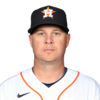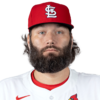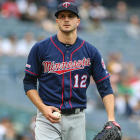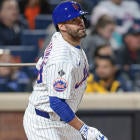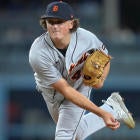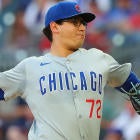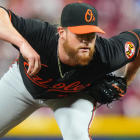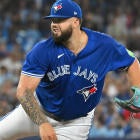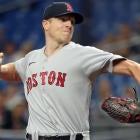Shocking though it may be, I'm now in my 12th year writing about Fantasy Baseball for CBS Sports.
When I first started, much of the information we've come to rely on today wasn't as readily available or as well understood. Thus, "Player X has been doing Thing Y for a while, so it must be who he is now" was a reasonable take to have.
It was a simpler time.
But not anymore. Between the information available on FanGraphs and through Statcast, I can usually come up with a data-driven explanation for why a player is doing what he's doing, and from there, surmise whether or not it will continue. It's a much more sophisticated, albeit drier, form of analysis that I dare say has made things more predictable overall, which is good.
The downside, though, is that when those explanations are nowhere to be found, I don't know what to do anymore. The old way of reasoning feels so much like guesswork and bloviated BS that I'm reluctant to reduce myself to it. Even dismissing a seemingly unsustainable performance as bad luck or good luck seems overly simplistic (even if it's fair to assume in many cases).
So ... for now, it's just a shrug of the shoulders. I can guess how each of these players' seasons will play out from here, but it'll most likely fall in line with my preseason expectations. I'm open to the possibility something has changed, though, even if I can't quite put my finger on what it is.
1. Jose Ramirez
In the most confounding case of all, Jose Ramirez's sudden loss of ability began over the final six weeks of last season, continued during spring training and has persisted through the first two months of 2019, so we're talking in the neighborhood of 400 plate appearances as roughly a .200 hitter. Yet his plate discipline remains stellar — the strikeout rate, the exit velocity, basically his entire batted-ball profile. He's also just 26 years old. After so much time, you have to conclude something's up, but usually when a good player goes bad, it's reflected in one or more of those ways. Fortunately, the stolen bases make it a little easier to hold out.
2. Jake Odorizzi
The inspiration for this column, Jake Odorizzi has obviously dominated, allowing zero earned runs in six of his past seven starts and no more than three hits in eight of his 12 starts overall. It's mostly on the strength of his fastball, which is up 1.5 mph this year, yet his swinging strike rate, both on the fastball and overall, is only slightly up from the previous two seasons. He's an even more extreme fly-ball pitcher than a year ago, yet his home run rate has been cut in half. Maybe the fact his xFIP and SIERA are both over 4.00 tells us all we need to know.
3. Manny Machado
Kind of weird to see a perennial early-round pick featured here, but since leaving the Orioles midway through last season, Manny Machado has been fairly ordinary, batting about .260 with an OPS shy of .800. It wouldn't be so damning if it wasn't basically how he performed away from Camden Yards during all those years with the Orioles. That venue is unquestionably hitter-friendly but hasn't been known for making or breaking players, and it's hard to imagine a player of Machado's stature being a product of his environment. The rise in strikeout rate owes nothing to venue and helps explain the drop in batting average, but then again, it's kind of its own problem.
4. Brad Peacock
The development of a slider transformed Brad Peacock from minor-league journeyman to strikeout artist in 2017, and after a year in the bullpen, his return to the starting rotation this season figured to bring more success. And it has, but not because of the slider, which has generated so few swinging strikes that he began to de-emphasize it in May. Among the 128 qualifying pitchers, he ranks 112th in swinging strike rate, so the skill that put him on the map is completely gone now. And yet he's succeeding in spite of it, somehow.
5. Kevin Gausman
Now in his seventh major-league season, Kevin Gausman has yet to be a particularly good starting pitcher in Fantasy, yet he has deked us so many times into believing he's on the verge that he's practically the poster child for this column. Hey look, he's doing the thing we've always said he should do, throwing his best pitch, a split-finger fastball, about 40 percent of time, and he has the 16th-best swinging strike rate — ahead of Matthew Boyd, Robbie Ray, Lucas Giolito and Trevor Bauer, among others — as a result. And yet the numbers kind of speak for themselves, don't they?
6. Aaron Nola
Among the underachieving aces, most have just one thing wrong — typically the home run rate — so it's easy enough to imagine it normalizing. But for Aaron Nola, everything is off. We're talking home run rate, line-drive rate, walk rate, swinging strike rate ... he's a far more hittable pitcher even though his velocity and pitch selection are almost exactly what they were a year ago. He was definitely improved in May, but he still underperformed in a number of those areas and then kicked off June with a stinker Monday at the Padres. You hang on for the upside, but a return to it doesn't seem so assured.
7. Chris Archer
Chris Archer is in his second year of having an arsenal that looks healthy and gets as many whiffs as it always has yet can't keep men off base, whether via walk or hit. The going explanation is that he's not locating his fastball, and maybe it's as simple as that. But if it is as simple as that, you'd think he'd have figured out a solution by now. Dude had an impressive four-year run of near-ace production prior to his downfall, so it's not like he has nothing to draw from. By now, it's reasonable to wonder if he's concealing some sort of injury.
8. David Dahl
David Dahl has a BABIP around .450, which is crazy high and reason to suspect his batting average could plummet. But that's been true since the start of the season, and it keeps getting better. He's coming off a stretch of seven multi-hit games in 11. Most likely, the regression is still coming and just needs more time, but the BABIP-inflating ways of Coors Field come into play here, too. And then there's the fact Dahl's home run pace is well off from last year's, which gives reason to believe there's as much positive regression as negative regression in his future.
9. Lance Lynn
Lance Lynn's season-long numbers don't tell the whole story. He has been a different pitcher over his past seven starts, putting together a 3.30 ERA. The stretch has featured six quality starts, four starts of seven innings, two starts with double-digit strikeouts, and a 10.3 K/9. There has been a small change in his arsenal during that time. He has thrown his cutter more and his four-seam fastball less, which has possibly added some deception, but it's not like his swinging strike rate during that time backs up the high K/9. At 32, he shouldn't have any new tricks, but the number of pitchers capable of the inning and strikeout totals he has delivered recently is so limited that we have little choice but to come along for the ride.
10. Jesse Winker
One of my breakout picks coming into the year still has the impressive batted-ball profile that gave him a .299 batting average and .405 on-base percentage a year ago. OK, so he's not walking as much — and that is a problem — but his BABIP is about 100 points lower despite a similar line-drive rate, hard-hit rate and all-fields approach. His production has come almost entirely in the form of home runs, which was supposed to be the questionable part of his game. As long as the Reds stick with him, I expect him to come around, but Derek Dietrich is pressuring manager David Bell for more at-bats. Left field is one place to get them.













